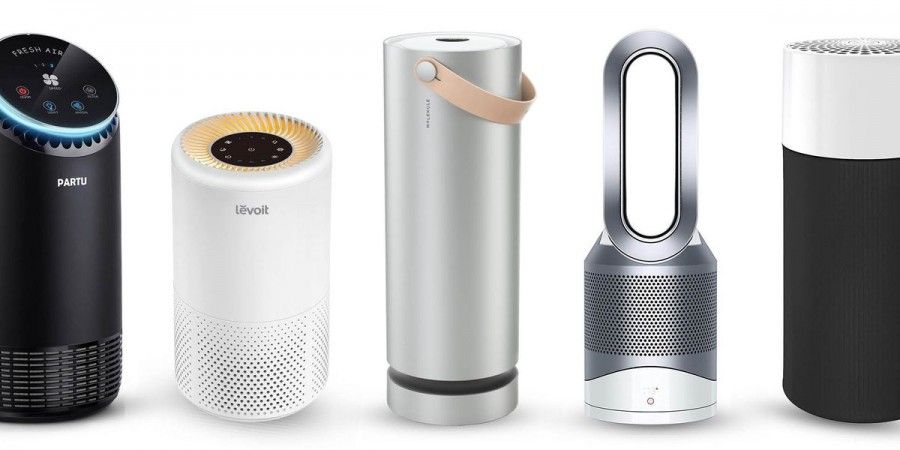The technology used in air purification is basically divided into two categories - active and passive. However, there are some air purifiers that use both technologies.
Air purifiers clean the air by removing dust, pollutants, allergens, impurities, smoke, mites, bacteria, viruses, pollen, mold, odors, gases, etc. With the increasing indoor air pollution, the need for air purifier has increased. They are a great boon for patients suffering from asthma and various types of allergies. Today, they have become a necessity for every home.
Many brands with different specifications are coming into the market, making it difficult for consumers to choose the best one. Before choosing a product, one should make sure that they are aware of the technology used in it and the problems associated with it.
Types of technologies
The technology used in air purification is basically divided into two categories - active and passive. However, there are some air purifiers that use both technologies.
1. passive technology
In passive technology, the air is purified by suction into the air purifier. The air that is sucked in passes through the filters in the air purifier, thus purifying the air from impurities, microorganisms, allergens, dust particles, pollen, odors, gases, etc. Some of the passive technologies are:
- HEPA and generic filters - both are used to filter solid particles from the air.
- Activated carbon air filters - used to remove chemical compounds and odors
- Electrostatic precipitators - used to filter very small particles
- UV filters - used to kill microorganisms in the air
The air purifiers that use passive technology must have mandatory filters.
2. active technology
Active technology is a technology in which the air is purified outside the purification unit by creating some kind of effect in the air. Active air purifiers come in two types. They are:
Ionizer air purifiers create ions that attach to particles and remove chemical compounds, dust particles, etc. from the air.
Ozone generators change oxygen molecules and turn them into ozone; this destroys microorganisms and removes odors and gases from the air
3. active and passive technologies
It is a combination of active and passive technologies, and the air purifiers with this technology are more efficient than the air purifiers with any single technology.
Concerns they address
Before buying an air purifier, you should be aware of the purpose of your purchase and you need to check whether it fulfills it or not. There are several concerns that an air purifier must address.
Allergies: Most city dwellers are exposed to a dusty environment. The dusty air consists of many tiny dust particles such as sand, small stones, plant pollen, etc., to which most people are allergic. Since most of the allergens are solid particles, you should buy an air purifier whose filters are efficient enough to filter these allergens.
Asthma: asthma is a chronic respiratory disease that is further aggravated when breathing in air polluted with contaminants. Air purifiers should not only be able to filter the air of impurities, but also be able to oxidize the air.
Odor: modern apartments have a very limited possibility of ventilation. Therefore, the circulation of air in the apartment becomes difficult. Due to the stagnation of the air, a typical odor can develop. Odors can also be caused by various reasons such as painting, cooking, burning, etc. In such cases, an air purifier should be able to remove odors from the air.
Smoke: Smoke is a big problem in homes on the side of the road or in industrial areas. Other reasons for smoke indoors are cooking, burns, etc. Smoke contains a large amount of pollutants that can affect people's health. An air purifier should be able to effectively remove any thick solid particles that are present in smoke.
Mold: Mold spores are one of the airborne pollutants. They cause many health problems such as asthma, allergies, coughing, sneezing, etc. These mold spores are sometimes toxic and pose a serious threat. Therefore, you should check if the air purifier is able to fight these tiny but threatening spores.
Animal dander: in homes with pets, there is a high risk of air pollution from their dander. Some people may also be allergic to them. To keep the environment of the house free from dander, you should choose a suitable air purifier.
Cold, flu and viruses: Apart from the natural pollutants and contaminants present in the air, there is also a considerable amount of microorganisms present in a given place. These microorganisms are generally small germs, bacteria and viruses. These are mostly known to cause problems such as colds and flu. They are more prevalent in certain seasons. New air purifiers are now able to kill biological organisms present in the air. Opting for this type of air purifier is generally very beneficial for consumers to protect their health to the maximum.
Chemicals: chemicals are part of almost everyone's life today. Sometimes these chemicals release toxic gases that can cause irreparable damage to the health of the people who breathe them. An efficient air purifier equipped with technology to clean the chemical contaminants should be given top priority.
Air purifiers, a basic need in every household, should be purchased with great knowledge. Today, the latest technologies are used to clean the air more effectively. When buying an air purifier, in addition to the cost, you should take into account the above factors to lead a healthy life.
releated article
https://theomnibuzz.com/buying-guide-and-tips-for-air-purifiers/







*********gmail.com
One smart addition to your air purification setup is a smart AC controller like Sensibo. This innovative device can integrate seamlessly with your existing HVAC system, allowing you to control the air quality in your home remotely. It also enables you to monitor and adjust humidity levels, making it an excellent addition for those seeking a comprehensive solution to improve indoor air quality.